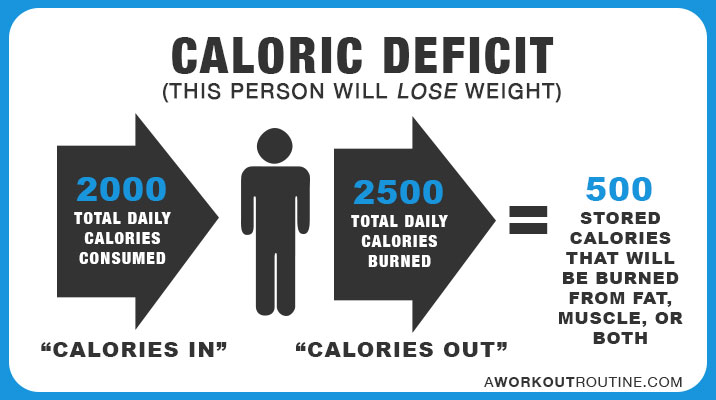how much of a calorie deficit should i be in Weight caloric surplus maintenance calories loss muscle calorie deficit many should eat maintain lose gain diet burn than body consume
When it comes to losing weight and optimizing your health, achieving a calorie deficit is often a key component. However, when cutting calories, many people worry about losing muscle mass along with the fat. So, how much of a calorie deficit can you aim for without losing muscle? Let’s take a closer look. First and foremost, it’s important to understand that a calorie deficit is necessary for weight loss. When you consume fewer calories than your body requires, it taps into stored fat for energy, leading to weight loss. However, when this deficit is too extreme, it can cause your body to turn to muscle for energy as well, which can lead to muscle loss. So, what’s the sweet spot for a calorie deficit without risking muscle loss? The general consensus among health professionals is that aiming for a deficit of 500-1000 calories per day is ideal. This equates to a weight loss of 1-2 pounds per week, which is a healthy and sustainable rate. Of course, individual needs can vary, and it’s important to consider factors such as age, gender, activity level, and overall health. In addition, a deficit that feels manageable for one person may not be sustainable for another. It’s important to listen to your body and make adjustments as needed. One way to prevent muscle loss while in a calorie deficit is to prioritize strength training. Resistance exercises such as weight lifting can help to build and maintain muscle mass while also burning calories. Additionally, consuming adequate protein is crucial for muscle maintenance. Aim for at least 0.8 grams of protein per pound of body weight, and consider consulting with a nutritionist to develop a plan that meets your individual needs. It’s also worth noting that losing some muscle mass during a weight loss journey is natural and expected. However, by aiming for a moderate calorie deficit and focusing on strength training, you can minimize muscle loss and achieve your desired weight loss goals in a healthy way. In conclusion, a moderate calorie deficit of 500-1000 calories per day is a safe and effective way to lose weight without risking muscle loss. By incorporating strength training and adequate protein into your routine, you can maintain or even build muscle while shedding unwanted pounds. Remember to listen to your body and make adjustments as needed to ensure a healthy and sustainable weight loss journey.
If you are searching about How Much Calorie Deficit To Not Lose Muscle - SWOHM you’ve visit to the right web. We have 5 Pictures about How Much Calorie Deficit To Not Lose Muscle - SWOHM like Pin on Health and fitness meal, How Much Calorie Deficit To Not Lose Muscle - SWOHM and also Many people consume more calories than they need to maintain their. Here it is:
How Much Calorie Deficit To Not Lose Muscle - SWOHM
 swohm.blogspot.comdeficit calorie calories
swohm.blogspot.comdeficit calorie calories
How Much Calorie Deficit To Not Lose Muscle - SWOHM
 swohm.blogspot.comdeficit lose
swohm.blogspot.comdeficit lose
Many People Consume More Calories Than They Need To Maintain Their
 www.pinterest.comdeficit calories lose maintain
www.pinterest.comdeficit calories lose maintain
WEIGHT LOSS Frequently Asked Questions: Infographic Answers - Page 3
 community.myfitnesspal.comweight caloric surplus maintenance calories loss muscle calorie deficit many should eat maintain lose gain diet burn than body consume
community.myfitnesspal.comweight caloric surplus maintenance calories loss muscle calorie deficit many should eat maintain lose gain diet burn than body consume
Pin On Health And Fitness Meal
 www.pinterest.comdeficit calories foods caloric lose sabaforlife salvat
www.pinterest.comdeficit calories foods caloric lose sabaforlife salvat
Deficit calories foods caloric lose sabaforlife salvat. Weight caloric surplus maintenance calories loss muscle calorie deficit many should eat maintain lose gain diet burn than body consume. How much calorie deficit to not lose muscle